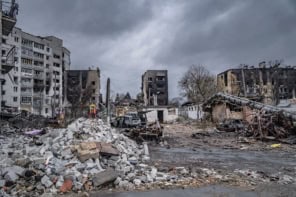In 1926, Russian physicist Yakov Frenkel proposed a theory that put a limit on the amount of stress a perfect crystal can withstand before its structural planes begin to slip over one another. Now, however, physicists from Norway have made a theoretical model showing that before Frenkel's limit is ever reached, crystals will deform due to a process called "thermal runaway" -- whereby strain and heat amplify rapidly. This could shed light on the mechanisms underlying deep earthquakes, and could help engineers to determine material tolerances more accurately (Phys. Rev. Lett. 98 095504).
Frenkel’s theory applies to perfect crystals, and has long been known to set the stress limit too high for most real materials. This is because real materials often contain defects that can move through the structure and make it easier for planes to slip. But this is not always true: some materials such as rocks in the Earth’s interior and metallic glasses have structures that act to prevent defects from moving, and so can demonstrate unusually high shear strengths.
However, even these materials do not quite reach Frenkel’s limit. 40 years after Frenkel’s proposal, scientists suggested that the discrepancy arises because most materials have an inherent viscosity that is a function of strain. Although viscosity is heavily temperature dependent, strain itself produces heat. Therefore, a local increase in strain will cause a temperature rise that decreases viscosity, which in turn enhances the strain – a process known as “thermal runaway”.
Now, another 40 years later, Simen Braeck and Yuri Podladchikov from the University of Oslo have designed a theoretical model that can predict the stress limit while taking thermal runaway into account. In their model, a wide slab of material contains a small central region at a slightly higher temperature. Stress is then applied to force the central region, and the resulting strain is calculated. The physicists could then use the model to search only for the localized failure indicative of thermal runaway.
Braeck and Podladchikov found that the width of the central region and the viscosity in their model do not have a big impact on the value of the “critical” stress that a material can tolerate. However, they did find that all materials with viscous behaviour will experience failure due to thermal runaway before Frenkel’s limit is reached. Applying their model’s formulae to real materials, they found that metallic glasses would fail at a stress three times lower than Frenkel’s limit, and rocks in the Earth’s interior would fail (at best) four times lower – predictions very close to the values observed in experimental studies.
Braeck told Physics Web that the research shows how thermal runaway could be a potential mechanism for deep earthquakes, and could be of importance to engineers who employ metallic glasses as structural materials. “Our calculations show that thermal runaway in general is unavoidable at high enough stresses, [and] therefore puts a fundamental upper limit on the maximum attainable strength of solids,” he said.



